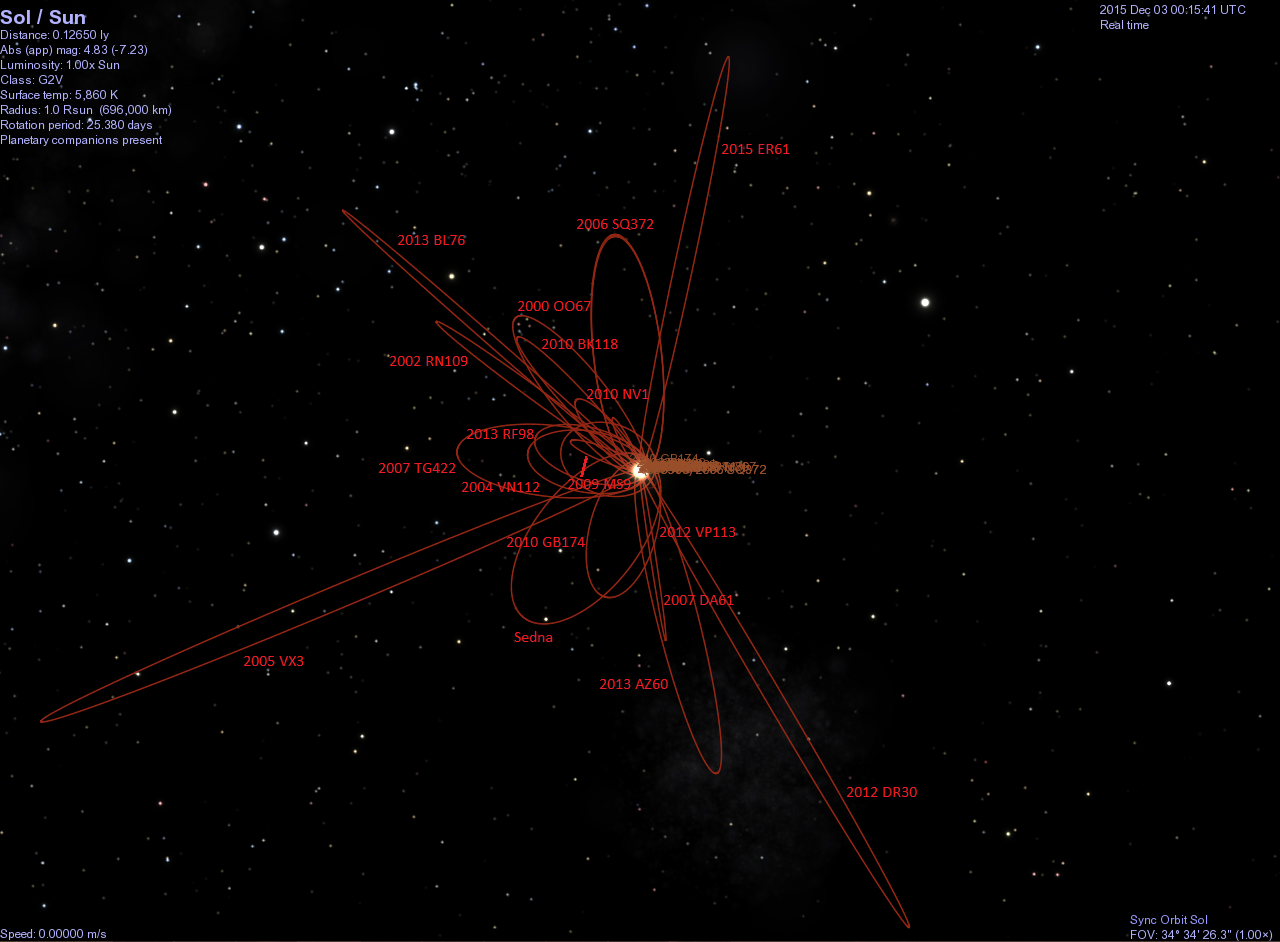(87269) 2000 OO67 on:
[Wikipedia]
[Google]
[Amazon]
(

List Of Centaurs and Scattered-Disk Objects
at the Minor Planet Center * * Scattered disc and detached objects Centaurs (small Solar System bodies) Discoveries by CTIO Discoveries by the Deep Ecliptic Survey 20000729 {{centaurTNO-stub
provisional designation
Provisional designation in astronomy is the naming convention applied to astronomical objects immediately following their discovery. The provisional designation is usually superseded by a permanent designation once a reliable orbit has been cal ...
) is a trans-Neptunian object
A trans-Neptunian object (TNO), also written transneptunian object, is any minor planet in the Solar System that orbits the Sun at a greater average distance than Neptune, which has a semi-major axis of 30.1 astronomical units (au).
Typically ...
, approximately in diameter, on a highly eccentric orbit in the outermost region of the Solar System
The Solar System Capitalization of the name varies. The International Astronomical Union, the authoritative body regarding astronomical nomenclature, specifies capitalizing the names of all individual astronomical objects but uses mixed "Solar ...
. It was discovered by astronomers at the Chilean Cerro Tololo Inter-American Observatory
The Cerro Tololo Inter-American Observatory (CTIO) is an astronomical observatory located on Cerro Tololo in the Coquimbo Region of northern Chile, with additional facilities located on Cerro Pachón about to the southeast. It is approximately ...
on 29 July 2000.

Description
Ataphelion
An apsis (; ) is the farthest or nearest point in the orbit of a planetary body about its primary body. For example, the apsides of the Earth are called the aphelion and perihelion.
General description
There are two apsides in any ell ...
it is over 1,000 AU from the Sun and, with a perihelion
An apsis (; ) is the farthest or nearest point in the orbit of a planetary body about its primary body. For example, the apsides of the Earth are called the aphelion and perihelion.
General description
There are two apsides in any elli ...
of 21 AU, almost crosses the orbit of Uranus
Uranus is the seventh planet from the Sun. Its name is a reference to the Greek god of the sky, Uranus ( Caelus), who, according to Greek mythology, was the great-grandfather of Ares (Mars), grandfather of Zeus (Jupiter) and father of ...
at closest approach. Astronomers with the Deep Ecliptic Survey
The Deep Ecliptic Survey (DES) is a project to find Kuiper belt objects (KBOs), using the facilities of the National Optical Astronomy Observatory (NOAO). The principal investigator is Robert L. Millis.
Since 1998 through the end of 2003, the ...
classify it as a centaur rather than a trans-Neptunian object. came to perihelion
An apsis (; ) is the farthest or nearest point in the orbit of a planetary body about its primary body. For example, the apsides of the Earth are called the aphelion and perihelion.
General description
There are two apsides in any elli ...
in April 2005. Both and are calculated to take longer than Sedna to orbit the Sun using either heliocentric coordinates or barycentric coordinates
In mathematics, an affine space is a geometric structure that generalizes some of the properties of Euclidean spaces in such a way that these are independent of the concepts of distance and measure of angles, keeping only the properties related ...
.
Comparison

See also
* * * * * TAU (spacecraft) (probe designed to go 1000 AU in 50 years) *List of Solar System objects by greatest aphelion
This is a list of Solar System objects by greatest aphelion or the greatest distance from the Sun that the orbit could take it if the Sun and object were the only objects in the universe. It is implied that the object is orbiting the Sun in a t ...
References
External links
List Of Centaurs and Scattered-Disk Objects
at the Minor Planet Center * * Scattered disc and detached objects Centaurs (small Solar System bodies) Discoveries by CTIO Discoveries by the Deep Ecliptic Survey 20000729 {{centaurTNO-stub